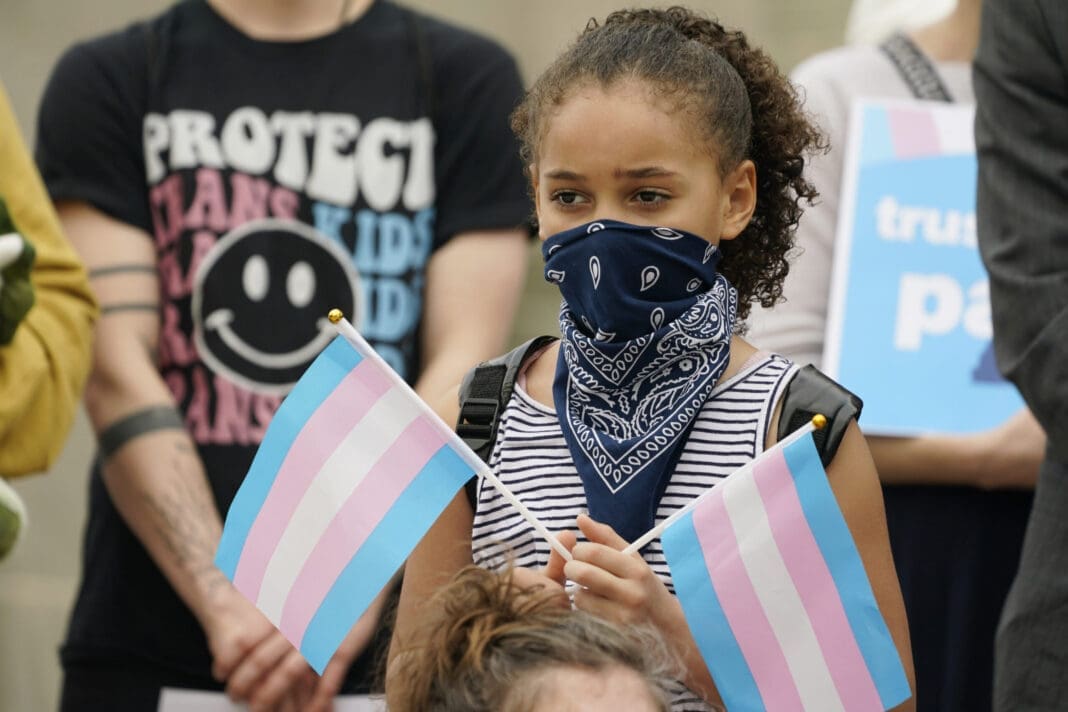Why we don't know more about violence against trans people
Barriers to obtaining a clear picture of violence against trans and gender-nonconforming people remain, experts say.

At least 50 transgender and gender-nonconforming people have been killed this year across the country, according to a report compiled by the Human Rights Campaign. This marks the highest number of such killings since records have been kept: Last year, at least 44 trans and gender-nonconforming people suffered violent deaths, the previous highest number recorded.
The words “at least” when describing the number of deaths is key to understanding the figures: It reflects what the people tracking them don’t know, due to a lack of a reliable data collection, inaccurate information shared by police, and other barriers to obtaining a clear picture of violence against trans and gender-nonconforming people.
The most recent death the Human Rights Campaign lists is that of Nikai David, a 33 year-old Black transgender woman. The Advocate reported that David, a model who was said to have wanted to start her own clothing business, was found on a street in West Oakland early in the morning on Dec. 4. David had been shot in the head and died on the street.
The organization’s report on violent deaths of transgender and gender-nonconforming people in 2021 notes that since it started collecting information about them in 2013, there have been many common elements to these incidents, including the involvement of firearms and the age, race, and gender of the victims: 77% of the victims have been transgender women of color and 79% of the people killed were 35 or younger. More than two-thirds of the killings involved a firearm.
Advocates at the Human Rights Campaign who understand how the tracking and reporting process works said they have several ways of collecting data about these killings, including keeping close relationships with local LGBTQ organizations who may know the victim, watching for more information on social media and in news reports, and responding to folks who reach out to them about these deaths. But there are still many challenges to the work, including police and the media misgendering victims and families that rejected their transgender loved one.
Laurel Powell, deputy director of communications for programs at the Human Rights Campaign, said, “Someone reaches out to us and says, ‘I know someone who was killed.’ Family members sometimes reach out to us. Sometimes we learn from local news. So that’s why we say we’ve tracked at least 47 cases, because it’s almost certain that we haven’t tracked all of them.”
Powell and Jay Brown, senior vice president of programs, research, and training for the campaign, said they’ve seen cases in which families haven’t honored the gender of the victim, which makes it more difficult to track these killings.
“It was up to piecing together a few things to even uncover that this was a trans person who had been killed,” Brown said. “That has been a problem historically in trying to report on this violence. I think, with more understanding and more support of trans folks, we hope to see that shift. It’s a problem not just with family, but obviously with law enforcement as well and with the media in local reporting, so we have work to do on all fronts.”
But Brown said he is seeing improvement in the quality of information he’s getting about these killings. When the organization began tracking them in 2013, he said he noticed more misgendering of trans victims in the news compared to current reporting of these deaths.
“There are more people paying attention to this and there are more people reporting these deaths. In many ways, we expect to see the numbers rise,” he said. “It’s not only that we face a lot of stigma as trans folks in this world, but that more folks are recognizing this as a real problem and reporting on these incidents of violence with more regularity.”
In addition to the homicides, it is a challenge for LGBTQ advocates to get reliable data on bias-motivated crimes against trans people: As ProPublica reported in 2017, although the FBI is required under a 1990 law to collect information on bias crimes from local law enforcement agencies, it can’t force them to provide it, and there is no guarantee that any information that is provided is accurate.
“It really is a clunky system that has a lot of gaps, especially when you’re dealing with folks who may have bias against the individuals who were the victims themselves,” Brown said.
In its report on killings of transgender and gender-nonconforming people in 2021, HRC says that federal, state, and local governments must improve data collection on gender identity to better understand how to stop violence against trans and gender-nonconforming people. In its “Blueprint for Positive Change 2020,” the organization stated, “Because this voluntary data is far from complete, the Department of Justice (DOJ) should intensify efforts to encourage local law enforcement to report hate crimes statistics annually.”
California could serve as a model for how to improve the collection of data: It passed a law this year that makes it the first state to record the sexual orientation and gender identity of victims of violent deaths as part of a three-year pilot program.
Published with permission of The American Independent Foundation.
Recommended

Alaska House committee advances, expands proposal to bar trans girls from girls sports
Amended bill would add elementary, middle school and collegiate sports to limits in place for high school
By Claire Stremple, Alaska Beacon - April 16, 2024
Bills targeting trans people are on the rise nationwide and in Alaska — most focus on children
House committee advances legislation that would restrict the rights of Alaska trans kids
By Claire Stremple, Alaska Beacon - April 01, 2024
Anti-abortion, anti-LGBTQ resolutions to be voted on at state Republican convention
A resolution to be considered by North Dakota Republican Party delegates at their upcoming convention would define life as beginning at fertilization and call for criminal penalties for “anyone who kills a pre-born human being.”
By Michael Achterling, North Dakota Monitor - March 26, 2024









































































